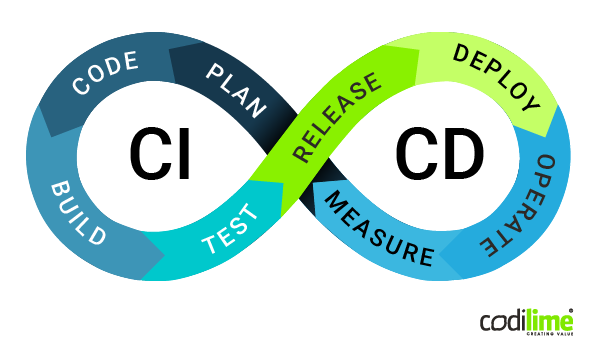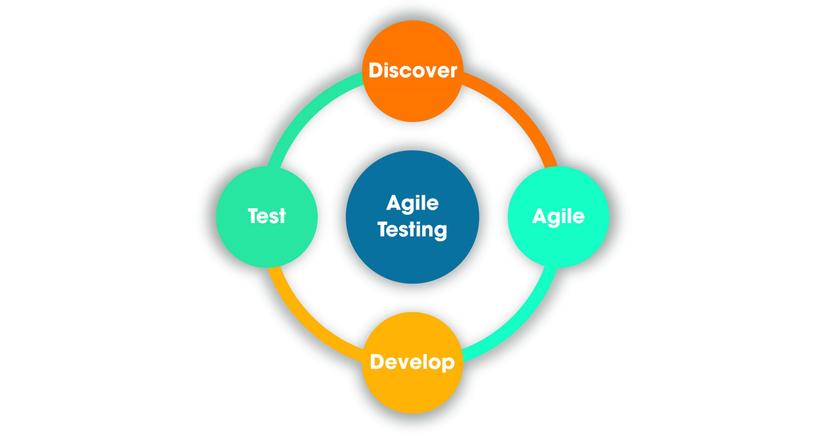Often when an organization or company plans and executes an automation strategy, they believe that they are doing continuous testing. They were wrong.
Automation testing is definitely one of the most important components of continuity testing. But implement continuous testing, starting with a multilayer testing strategy – covering all the types and levels of testing required: Unit, Integration, Functional, Exploratory, and Automated. Continuity testing must also have a strategy to incorporate throughout continuous development.
Continuity testing requires ongoing technical and business risk analysis, as well as process improvement and automation throughout the development process. Equally important is to develop a culture in which quality is a shared responsibility of all team members.

Here are the four main steps for an effective continuous testing strategy, along with what you need to know about each.
1. Streamline testing process
This has three components: focus on business risk, identify and reduce bottlenecks, and optimize your tests.
DevOps’ ultimate goal, the goal of continuity testing, is to minimize business risk, including customer risk and organizational risk.
Customer risk involves understanding which process in your application is most important to your customer and your Risk base testing planning.
Organizational risk involves understanding the complexities of the business environment as well as the product itself. For example, being the person who brought this kind of application first to the business, or is the quality and stability of the product taking precedence. Once the overall business risk is correctly assessed, you should map requirements, application components, and tests against those risks.
It is important to identify and minimize bottlenecks; they interfere with both quality and speed. Test process constraints can be found throughout, from requirements through post-inspection. An example is: Testers do not know the process, requirement of the project when not invited to ad hoc meetings or meetings addressing new functions.
2. Test automatically in CI process
Continuous testing requires testing automation throughout the delivery / delivery process. Test automation increases deployment speed and reduces the risk inherent in continuous delivery – typical of the Agile model.
But automation in continuity testing is not just about developing and maintaining a set of automated test scripts. In fact, automated regression testers, especially those that take a lot of time, are often left overnight, creating bottlenecks in ongoing deployment. Continuity testing requires a test automation strategy that enhances, rather than hinders, the continuous delivery process.
Automated testing continues until it is made available for production. At this stage, it acts as a lock-in to find any problems before the Client finds them.
In your continuity testing strategy, automation must be designed to run efficiently while providing reliable, consistent, repeatable results. Your automation strategy should be well-developed, including a test maintenance plan and a schedule of automated test scripts that will run at specific times corresponding to delivery milestones. Products.

3. Shift left
In order to implement a successful continuous testing strategy, it is important that the team stick to the Shift left testing process – advocating testing as early as possible in development. Quality engineering is the practice of building quality throughout the development process; It starts with development and focuses on preventing defects, rather than finding them. Shift left testing allows for building quality engineering and continuous testing.
Test-driven development ( TDD ), behavior-driven development ( BDD ), and acceptance test-driven development ( ATDD ) are the techniques in Shift left testing.
In TDD, Dev and Tester will work together to design the test set first, then Dev develops the application so that the test suite is PASSED. BDD is TDD with a design that focuses on customer behavior. ATDD focuses on customer-centric design, with Dev, Tester, and Product Owner will be responsible for working together during document design sessions.
What is important is how the scope of Shift testing should be developed. Since the root cause of the many performance and security issues that can be found in input design, it is important to find the bugs early, before the design can be finalized. When you don’t find those defects until late in the process, they become much more complicated and costly to fix.
Learn more about TDD, BDD and ATDD here .
4. Responsible for the quality
This step is the foundation of the continuity testing strategy. Unless all team members accept their role in project quality assurance, other factors cannot be successfully implemented.
Taking responsibility for quality requires the change of mindset to be led from the very beginning. Each member of your team must understand the nature of their role in quality engineering. Today, the change and adaptation to Agile model in large enterprises and companies is a trend. Therefore, training and changing mindset of every team member is paramount before starting a real project.

Reference source:
https://techbeacon.com/app-dev-testing/4-elements-highly-effective-continuous-testing-strategy
https://www.browserstack.com/guide/tdd-vs-bdd-vs-atdd
https://viblo.asia/p/shift-left-testing-bi-quyet-cho-phan-mem-thanh-cong-oOVlY14zl8W
